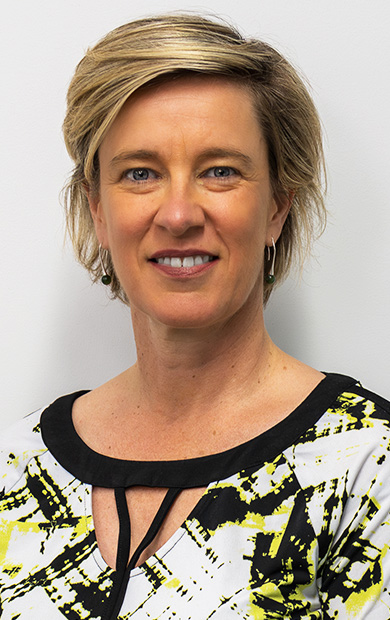Australia helps set standard for inclusivity and diversification in the workplace
Statements
- New ISO diversity and inclusion standard developed with Australian experts and adopted locally.
- Standard helps large and small organisations through diversity framework and recommendations.
In the US, COVID-19 has led to what's been dubbed the ‘Great Resignation’: millions of people voluntarily exiting their roles and jobs. And, according to recent research by Microsoft, more than 40 per cent of the global workforce are considering leaving their employers in the next year.
The exodus has company leaders bracing for a seismic shift in the workforce — and the trend is likely heading to Australia.
While the Great Resignation can be attributed to a number of factors, developing an inclusive organisational culture may positively benefit your company and, in turn, your employees’ satisfaction.
The development of this diverse and inclusive approach is no small feat. It requires an ongoing commitment to diversity and inclusion by leadership at all levels to address inequalities in organisational systems, policies, processes and practices, as well as people’s conscious and unconscious biases and behaviours.
To help guide organisations every step of the way, ISO has published a new standard in line with Australian experts – IS0 30415, Human resource management – diversity and inclusion. This has been adopted locally.
The standard has been deliberately built to service both small and large organisations. It provides a framework on diversity and inclusion, with a focus on intersectionality.
The framework can be implemented across the lifecycle of the HR process, from procurement, supplier diversity, recruitment and offboarding.
Additionally, it includes references, advice on implementation, activities, roles and responsibilities and metrics to measure the success of the framework in action.
Dr. Ruth McPhail, Professor of Human Resource Management and Head of the Department of Employment Relations and Human Resources at Griffith University has worked on the development of the standard with ISO for the past three years.
“I’m terribly proud of this standard. This area is a huge passion point for me and, hopefully, the standard can positively impact the leadership and culture of workplaces across Australia”, Dr. McPhail said.
“Standards are often thought of as technical guides for construction and building. However, this standard could really help businesses better support and understand their staff”, Ms McPhail concluded.
“Organisations and their people will greatly benefit from the effective management of inclusivity and diversity in the workplace. Australia’s ability to actively collaborate internationally on such an important standard speaks volumes. It’s an absolute pleasure to have representation on an international scale when supporting the development of such a valued standard,” said Mr Adrian O’Connell, Chief Executive Office of Standards Australia.
To view the standard please see here.

- New ISO diversity and inclusion standard developed with Australian experts and adopted locally.
- Standard helps large and small organisations through diversity framework and recommendations.
In the US, COVID-19 has led to what's been dubbed the ‘Great Resignation’: millions of people voluntarily exiting their roles and jobs. And, according to recent research by Microsoft, more than 40 per cent of the global workforce are considering leaving their employers in the next year.
The exodus has company leaders bracing for a seismic shift in the workforce — and the trend is likely heading to Australia.
While the Great Resignation can be attributed to a number of factors, developing an inclusive organisational culture may positively benefit your company and, in turn, your employees’ satisfaction.
The development of this diverse and inclusive approach is no small feat. It requires an ongoing commitment to diversity and inclusion by leadership at all levels to address inequalities in organisational systems, policies, processes and practices, as well as people’s conscious and unconscious biases and behaviours.
To help guide organisations every step of the way, ISO has published a new standard in line with Australian experts – IS0 30415, Human resource management – diversity and inclusion. This has been adopted locally.
The standard has been deliberately built to service both small and large organisations. It provides a framework on diversity and inclusion, with a focus on intersectionality.
The framework can be implemented across the lifecycle of the HR process, from procurement, supplier diversity, recruitment and offboarding.
Additionally, it includes references, advice on implementation, activities, roles and responsibilities and metrics to measure the success of the framework in action.
Dr. Ruth McPhail, Professor of Human Resource Management and Head of the Department of Employment Relations and Human Resources at Griffith University has worked on the development of the standard with ISO for the past three years.
“I’m terribly proud of this standard. This area is a huge passion point for me and, hopefully, the standard can positively impact the leadership and culture of workplaces across Australia”, Dr. McPhail said.
“Standards are often thought of as technical guides for construction and building. However, this standard could really help businesses better support and understand their staff”, Ms McPhail concluded.
“Organisations and their people will greatly benefit from the effective management of inclusivity and diversity in the workplace. Australia’s ability to actively collaborate internationally on such an important standard speaks volumes. It’s an absolute pleasure to have representation on an international scale when supporting the development of such a valued standard,” said Mr Adrian O’Connell, Chief Executive Office of Standards Australia.
To view the standard please see here.

